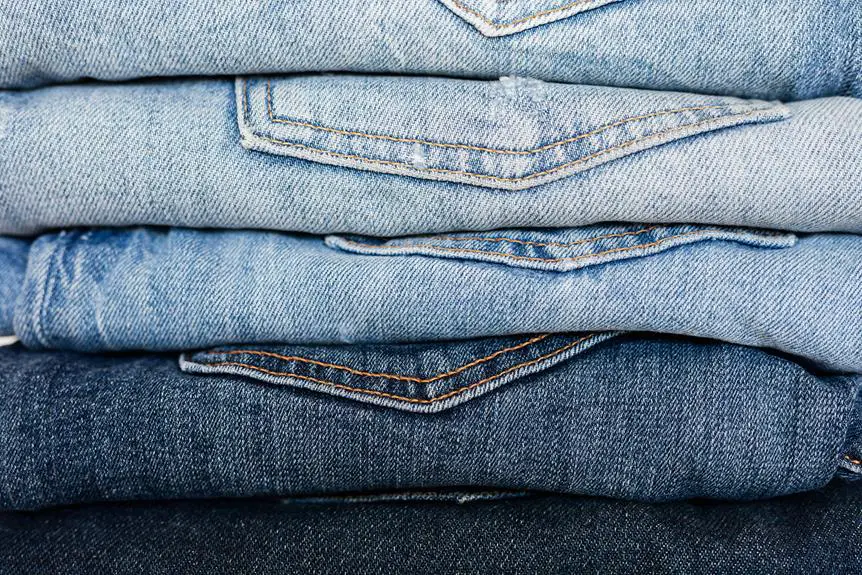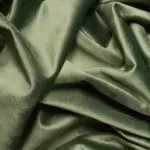When you're choosing quality seersucker fabric, it's essential to consider several key factors that impact both comfort and durability. You'll want to look closely at the material composition, as 100% cotton offers breathability, while blends can enhance longevity. Pay attention to the weave pattern too, since it influences the fabric's texture and overall look. As you think about weight and color options, remember that these choices can reflect your personal style. Understanding these elements is just the beginning—there's more to uncover about making the right selection for your needs.
Table of Contents
Understanding Seersucker Fabric
Seersucker fabric, known for its distinctive puckered texture, offers a unique blend of comfort and style that's perfect for warm weather. This fabric's unique design allows air to circulate, keeping you cool and comfortable even on the hottest days. You'll find seersucker in a variety of patterns and colors, making it versatile enough for both casual and formal occasions.
When you choose seersucker, you're opting for a fabric that's not only stylish but also low-maintenance. Its puckered texture helps hide wrinkles, meaning you won't have to spend much time ironing. Plus, it's typically made from cotton, which is lightweight and breathable, further enhancing its appeal for summer outfits.
You'll often see seersucker in shirts, dresses, and even suits, giving you plenty of options to work with. Whether you're dressing up for a summer wedding or keeping it casual for a picnic, seersucker can elevate your look effortlessly.
As you explore various seersucker pieces, keep in mind the fabric's unique qualities, as they play a significant role in your overall comfort and style during those warm sunny days.
Fabric Composition and Quality
When selecting seersucker, focus on fabric composition and quality to ensure you get the most comfortable and durable option. The fabric's makeup significantly influences its feel, longevity, and overall performance. Most seersucker fabrics are made from cotton, but blends with polyester or linen can also be found. These blends can enhance durability and wrinkle resistance, making them ideal for casual wear.
To help you choose the right seersucker, consider the following key factors:
| Fabric Type | Pros | Cons |
|---|---|---|
| 100% Cotton | Soft, breathable, comfortable | Can wrinkle easily |
| Cotton/Polyester | Wrinkle-resistant, durable | Less breathable |
| Cotton/Linen | Natural fibers, breathable | Can be stiff |
| Cotton/Rayon | Soft, drapes well | May not hold shape |
| Cotton/Spandex | Stretchy, comfortable fit | May lose shape over time |
Weave Patterns and Texture
Exploring the various weave patterns and textures of seersucker can help you find the perfect fabric that not only looks great but also feels comfortable against your skin. Seersucker is known for its unique crinkled texture, which is created through a special weaving process. This texture allows the fabric to sit away from your skin, promoting airflow and increasing comfort, especially in warmer weather.
When choosing seersucker, pay attention to the weave patterns. Traditional seersucker features alternating stripes, but you can also find checks or even more intricate designs. These patterns can affect the overall aesthetic and how the fabric drapes. A tighter weave will create a smoother finish, while a looser weave enhances that classic, relaxed look.
Additionally, consider the texture's depth. A more pronounced texture can add visual interest and character to your garments, making them stand out. On the other hand, a subtle texture might provide a more sophisticated, polished appearance.
Ultimately, the right combination of weave pattern and texture will ensure you select seersucker that not only meets your style needs but also offers the comfort you desire.
Weight and Durability
Choosing the right weight of seersucker fabric is crucial for ensuring both comfort and durability in your garments.
Lightweight seersucker, typically around 3 to 5 ounces per yard, is perfect for warm-weather clothing. It allows breathability and keeps you cool, making it ideal for summer shirts, dresses, and shorts.
However, if you're looking for something more substantial, medium-weight seersucker, which ranges from 5 to 7 ounces, offers added durability while still providing comfort.
When considering durability, pay attention to the fabric's construction. Higher quality seersucker is often made from tightly woven cotton, which enhances its strength and longevity.
You want a fabric that can withstand regular wear and washing without losing its shape or texture. Test the fabric by gently tugging it; a good-quality seersucker should spring back without showing signs of wear.
Ultimately, balance the weight of the fabric with your intended use. If you need something for everyday wear, opt for a medium-weight option.
But if you're creating a special occasion outfit, a lightweight seersucker will provide the perfect blend of elegance and comfort.
Color and Print Options
The variety of colors and prints available in seersucker fabric can elevate your garment's style and help you express your personal taste. You'll find everything from classic stripes to bold checks, allowing you to choose a design that resonates with your personality.
If you prefer a timeless look, opt for traditional pastel shades like light blue, pink, or mint green. These colors not only offer versatility but also exude a fresh, summery vibe.
On the other hand, if you're looking to make a statement, consider opting for brighter hues or unique patterns. Vibrant colors like coral or teal can add a pop of energy, while playful prints like florals or polka dots can showcase your fun side.
Remember that the print and color you choose can influence the overall mood of your outfit; lighter colors often convey a relaxed feel, while darker shades can lend an air of sophistication.
Ultimately, think about how you want the fabric to complement your wardrobe. By selecting a color and print that reflects your style, you'll ensure your seersucker pieces aren't just garments but true extensions of your personality.
Care Instructions and Maintenance
When it comes to caring for your seersucker fabric, you'll want to follow specific washing recommendations to keep it looking fresh.
Make sure you know the best drying techniques to avoid any damage or shrinkage.
With the right care, your seersucker will last and maintain its charming texture.
Washing Recommendations
To keep your seersucker fabric looking its best, wash it in cold water with a gentle detergent. This helps maintain the fabric's texture and prevents any unwanted shrinkage.
Here are some key washing recommendations to follow:
- Spot Clean When Possible: If there are small stains, try spot cleaning first instead of washing the entire garment. This preserves the fabric's integrity and color.
- Avoid Bleach: Bleach can damage the fibers and alter the color of your seersucker. Stick to mild detergents that are free from harsh chemicals.
- Gentle Cycle: Use your washing machine's gentle cycle to minimize any agitation, which can lead to pilling or fraying. If you're washing a delicate piece, consider placing it in a mesh laundry bag for added protection.
After washing, it's essential to follow proper drying techniques, which we'll cover next.
Drying Techniques
Air drying your seersucker fabric is the best way to preserve its shape and texture. After washing, gently shake out the fabric to remove excess water, but avoid wringing it out, as this can distort the material. You can hang your seersucker items on a clothesline or a sturdy hanger. Make sure to hang them in a shaded area to prevent the colors from fading in direct sunlight.
If you need to speed up the drying process, consider using a fan to circulate air around the fabric. Just remember not to use a dryer, as the heat can cause shrinkage and ruin the unique crinkled effect that makes seersucker special.
If you're in a pinch and must use a dryer, opt for a low-heat setting and remove the fabric while it's still slightly damp. This will help minimize any potential damage.
Lastly, once your seersucker is dry, give it a light iron with a low setting to smooth out any wrinkles, but be cautious not to flatten the texture. Following these drying techniques will keep your seersucker looking fresh and vibrant for years to come.
Where to Buy Quality Seersucker
When you're on the hunt for quality seersucker fabric, you've got a couple of great options.
Online fabric retailers often offer a wide selection, while local fabric stores can provide a chance to feel the texture before you buy.
Let's explore both avenues to help you find the best fabric for your needs.
Online Fabric Retailers
Finding quality seersucker fabric online can be a rewarding experience if you know where to look. With a plethora of options available, it's crucial to choose retailers that specialize in quality fabrics.
Here are three online fabric retailers that are highly regarded for their seersucker selections:
- Fabric.com: This site offers a wide range of seersucker fabrics in various colors and patterns. You can filter your search to find exactly what you need for your project.
- Mood Fabrics: Known for its luxurious fabrics, Mood carries high-quality seersucker that's perfect for both casual and formal wear. Their reputation in the fashion industry speaks volumes.
- Etsy: On Etsy, you can find unique, handmade, and vintage seersucker options. Many independent sellers offer high-quality fabric that you won't find in typical retail stores.
When shopping online, always check customer reviews and product descriptions to ensure you're getting the quality you desire.
Don't hesitate to reach out to sellers with questions; they're often happy to help you make the best choice for your seersucker fabric needs!
Local Fabric Stores
Many local fabric stores offer a fantastic selection of quality seersucker that you can touch and feel before making a purchase. This hands-on experience is invaluable, as it allows you to assess the fabric's texture, weight, and overall quality. When you visit these stores, take note of the colors and patterns available, as local shops often carry unique options you won't find online.
While you're there, don't hesitate to ask store staff for their recommendations. They usually have extensive knowledge about the fabrics they carry and can guide you toward the best seersucker options based on your project needs. Additionally, look for stores that prioritize high-quality materials, as this ensures your final product will look and feel great.
Before purchasing, check the fabric label for fiber content. Genuine cotton seersucker will provide breathability and comfort, especially in warmer months. Lastly, consider the store's return policy in case you realize the fabric isn't quite what you envisioned after getting it home.
Frequently Asked Questions
What Are the Origins of Seersucker Fabric?
Seersucker fabric originated in India, where it was known as "sirsucker." It gained popularity in the American South during the early 20th century, appreciated for its lightweight, breathable qualities, perfect for warm weather clothing.
Can Seersucker Be Used for Formal Attire?
Yes, you can use seersucker for formal attire, especially in warmer months. Its textured appearance adds a unique flair, but make sure to select tailored pieces for a polished look that's still stylish and comfortable.
How Does Seersucker Compare to Other Fabrics?
Seersucker stands out for its unique texture and breathability. Compared to smoother fabrics, it offers a casual, wrinkled look that's perfect for warm weather. You'll appreciate its lightweight nature and stylish versatility in your wardrobe.
Is Seersucker Suitable for All Seasons?
Seersucker's lightweight and breathable nature makes it ideal for warmer months, but it's not the best choice for winter. You can layer it for transitional seasons, but it won't provide warmth when temperatures drop.
Can I Find Eco-Friendly Seersucker Options?
Yes, you can find eco-friendly seersucker options! Look for brands that prioritize sustainable materials and ethical production practices. Online retailers and local boutiques often carry environmentally conscious fabrics, so keep an eye out while shopping.
- The History and Evolution of Chamois Fabric - June 22, 2025
- Chamois Fabric on Wikipedia: What You Need to Know - June 22, 2025
- How to Pronounce Chamois Fabric Correctly - June 22, 2025







